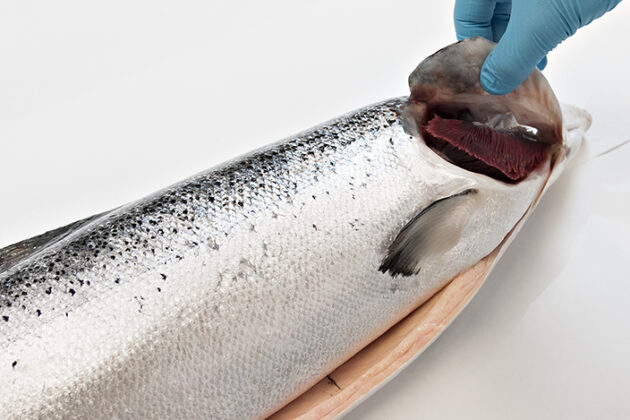PERAGILL
Peracetic acid treatment against AGD

This project will explore an alternative strategy to treat amoebic gill disease (AGD), a serious problem in Atlantic salmon aquaculture.
Start
15. Jan 2018
End
15. Dec 2021
Funded by
The Norwegian Seafood Research Fund - FHF
Cooperation
Technical University of Denmark, Quantidoc AS, Lilleborg AS
Project Manager(s):
Besides sea lice infestation, AGD is a significant and daunting issue the Norwegian Atlantic salmon aquaculture industry is facing today. The first documented case of AGD in Norway was in 2006. Since then, the threats have been quite persistent and the number of reported cases is showing an upward trajectory trend.
Therapeutic measures have been explored to address AGD in salmon. The use of freshwater and oxidative disinfectant bathing are the two strategies that have been widely investigated, and the former is already being applied in commercial production systems. Though freshwater treatment is effective in controlling AGD to a greater extent, the strategy entails significant infrastructure cost and is labor expensive. One important consideration and remains a major challenge is a requirement for a nearby freshwater source.
Given the escalating threat that AGD is posing to the Norwegian salmon aquaculture industry, there is indeed a big challenge to develop alternative methods that have the potential in addressing issues on efficacy, practicality and most importantly, sustainability. Peracetic acid (PAA), an organic peroxide, is being considered as a more sustainable disinfectant in aquaculture compared with other conventional disinfectants. PAA has anti-parasitic activity, is potent even at lower concentration and degrades into harmless, neutral residuals in the water column. These characteristics underscore the potential of PAA as a treatment for AGD.
PERAGILL is organised into five work packages (WPs). WPs 1-3 constitute the STAGE I while WPs 4-5 are part of the STAGE II. WP1 is the backbone of the project and together with WP2, will lay the foundation for WPs 4-5. WP1 will explore the effects of PAA on the causative agent and on the host, WP2 will evaluate the environmental risk associated with PAA treatment, WP4 will investigate different PAA application strategies to treat AGD infection and WP5 will compare the efficacy of PAA with the two conventional AGD treatments. WP3 constitutes the toolbox that will be used to assess the effects and efficacy of the treatment and will bridge STAGES I and II.